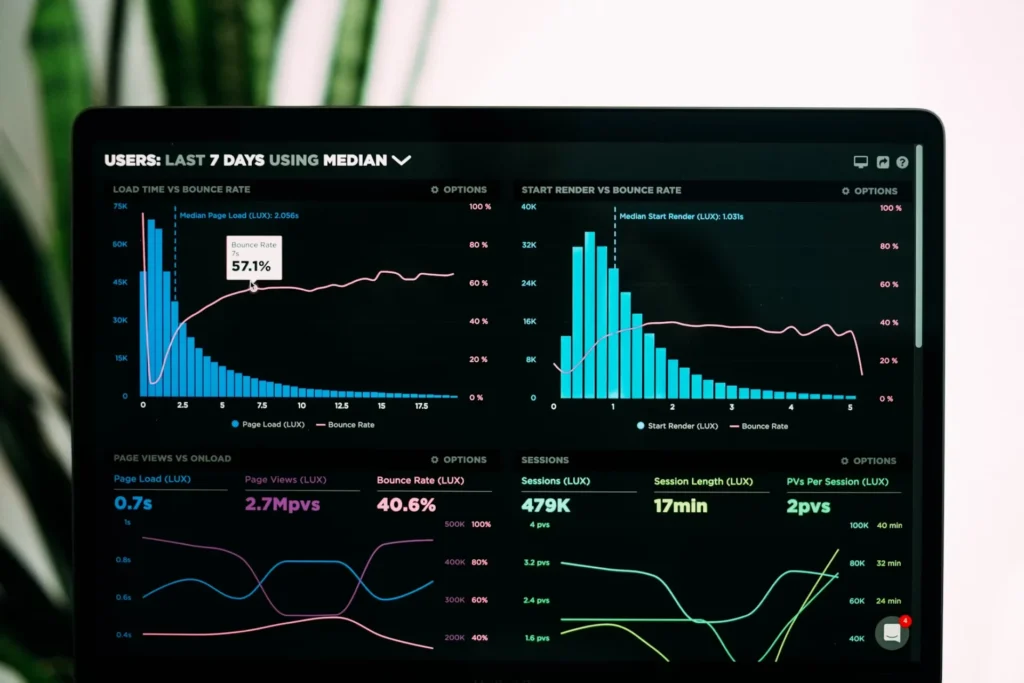Disclaimer: The information in this article is for general informational purposes only and should not be considered as professional advice. Results may vary, and it’s recommended to consult a qualified expert before making business decisions based on this content.
Every interaction with a customer is an opportunity, a chance to understand their needs, remove barriers, and ultimately drive revenue. Yet, many businesses overlook the vast amount of data hidden in these interactions, phone conversations, live chat messages, emails, Online platform comments, and even silence in abandoned carts. Each of these moments tells a story.
Companies that analyze customer engagement effectively don’t just improve sales; they build stronger relationships, refine their strategies, and stay ahead of the competition. Research by Salesforce reveals that 66% of customers expect businesses to understand their needs and expectations, yet only 34% feel that they are understood. That’s a gap businesses can’t afford to ignore.
This guide will break down the methods, tools, and real-world applications of evaluating client interactions. You’ll learn how to collect data, extract insights, and turn those insights into actionable strategies that drive measurable growth.
This article explores:
- The importance of client dealing analysis.
- Methods for gathering and interpreting customer engagement data.
- Practical strategies to increase sales using these insights.
- Real-world examples and statistics demonstrating the impact of client interaction evaluation.

Why Customer Interaction Analysis is Critical for Sales Growth
Customers’ engagement with a brand reflects their level of trust, interest, and readiness to make a purchase. Every successful company, whether a global corporation or a small business, relies on client interaction data to fine-tune its sales approach. Here’s why it matters:
1. Identifying Sales Barriers
Customers don’t always voice their frustrations directly, but their behavior speaks volumes. If website visitors frequently abandon their carts, if customer support receives repeated complaints about pricing, or if response times are slow, these are clear indicators of sales obstacles.
2. Personalization Drives Conversions
A study by McKinsey found that personalization can increase sales by 10% to 15% while also improving customer satisfaction. An enterprise can segment customers based on their behavior, preferences, and buying patterns when analyzing interactions. Personalized recommendations, targeted marketing, and tailored support increase the likelihood of conversion.
3. Proactive Problem-Solving Enhances Retention
Loyal customers spend more. According to Bain & Company, increasing customer retention rates by just 5% can boost profits by 25% to 95%. Enterprise can proactively address issues by analyzing customer feedback and interactions before they escalate, preventing churn.
4. Competitive Advantage in a Data-Driven Market
Companies that analyze Client engagements gain an edge over competitors. Businesses that fail to adapt risk falling behind. Consider the impact of AI-driven analytics leaders in this space who leverage machine learning to anticipate customer needs before the customer even expresses them.
Collecting Consumer Interaction Data
Businesses need access to diverse data sources to analyze Client engagement effectively. These interactions occur across multiple channels, both direct and indirect.

1. Direct Communication Channels
These are the most apparent sources of customer insights.
- Phone calls: Sales and support calls reveal customer objections, questions, and emotional responses. Moreover, you can now use the app to record phone calls and get everything that only business systems offer. Simple and effective.
- Live chat: Chat transcripts show real-time concerns and decision-making behaviors.
- Emails: Customer emails highlight recurring problems and offer clues on improving messaging.
2. Social Media & Online Engagement
Modern consumers interact with brands on platforms beyond direct communication.
- Comments & direct messages: Reveal sentiment, expectations, and brand perception.
- Online platforms shares: Identify the content that resonates with your audience.
- Online reviews & testimonials: Provide honest feedback about customer experiences.
3. Website & Behavioral Analytics
Digital interactions provide valuable insights into how customers interact with a brand.
- Click-through rates (CTR): A low CTR signals an ineffective call to action (CTA).
- Time on page: Longer duration suggests high engagement, while quick exits indicate confusion or disinterest.
- Cart abandonment rates: A significant indicator of potential lost sales and friction in the buying process.
4. Customer Surveys & Feedback Mechanisms
These provide direct input from customers regarding their experiences and expectations.
- Net Promoter Score (NPS): Measures the likelihood of customers recommending your brand.
- Customer Satisfaction Score (CSAT): Identifies pain points that need improvement.
- Qualitative feedback: Open-ended responses that highlight specific likes and dislikes.
5. AI-Powered Data Analysis
Advanced analytics tools allow businesses to process large volumes of data efficiently.
- Sentiment analysis: Uses machine learning to detect positive, negative, or neutral tones in customer communications.
- Chatbot analytics: Evaluates the effectiveness of automated responses.
- Voice analytics: Identifies frustration or enthusiasm in customer calls.
By gathering and integrating data from these sources, an enterprise can create a comprehensive picture of Client engagement.

Methods for Analyzing Customer Interactions
Simply collecting data isn’t enough. The real value lies in how businesses analyze and interpret it.
1. Conversational Analysis
Reviewing customer conversations across various channels can reveal common themes.
- Keyword tracking: Identifies frequently mentioned words or phrases that indicate concerns or interests.
- Sentiment scoring: Categorizes conversations as positive, neutral, or hostile to gauge customer satisfaction.
- Tone analysis: Assesses whether interactions are friendly, professional, or frustrated.
2. Behavioral Analytics
Tracking customer actions can provide insights into engagement patterns.
- Customer journey mapping: Shows how users navigate from discovery to purchase.
- Drop-off point identification: Highlights where customers lose interest.
- Engagement heatmaps: Visualize where customers focus their attention on a website or app.
3. Predictive Analytics
Leveraging past data can help forecast future behaviors.
- Customer segmentation: Groups customers Built on behavior, demographics, or purchasing habits.
- Churn prediction models: Identify customers at risk of leaving.
- Purchase probability modeling: Estimates the likelihood of a customer completing a sale.
4. Competitor Benchmarking
Comparing your customer dealings with industry benchmarks reveals competitive advantages and weaknesses.
- Response times: How quickly does your team address inquiries compared to competitors?
- Customer satisfaction levels: Are your engagement scores above or below industry standards?
- Engagement effectiveness: How does your Online platform’s presence compare regarding customer response?
Advanced Techniques for Consumer Interaction Analysis
Once you’ve mastered the basics, it’s time to go deeper. Here are some advanced methods for analyzing customers and extracting even more value from customer data.
1. AI-Powered Sentiment Analysis
AI can analyze thousands of Client engagements in seconds, categorizing them as positive, negative, or neutral. Tools like natural language processing (NLP) detect subtle emotions that a human might miss.
- Example: A customer might say, “I love the product, but the shipping was slow.”
- A basic system might classify this as positive.
- AI-driven sentiment analysis understands the mixed emotions of a great product and a poor delivery experience.
2. Predictive Analytics for Customer Retention
Churn prediction models analyze customer engagements to identify who is at risk of leaving. Factors like reduced engagement, negative feedback, or unanswered complaints can indicate a dissatisfied customer.
How to act on this data?
- Offer incentives to at-risk customers (discounts, loyalty points).
- Proactively reach out to address concerns.
- Improve weak touchpoints (e.g., slow response times).
3. Speech & Voice Analytics for Call Data
Sales and customer service calls hold rich insights, but manually reviewing them is impossible at scale. Speech analytics software identifies:
- Common objections (e.g., “too expensive,” “not sure if it’s right for me”).
- Successful sales strategies (what language top-performing agents use).
- Customer emotions (frustration, excitement, hesitation).

Businesses can then refine their sales scripts, improve training programs, and create more compelling offers.
Turning Data Insights into Actionable Strategies
Data analysis is meaningless unless it drives real change. Here’s how Enterprise can analyze customer dealings and apply the insights to increase sales.
1. Personalization at Scale
Personalized experiences lead to higher conversion rates.
- Dynamic content: Adapt website or email content, built on user behavior.
- AI-driven product recommendations: Suggest relevant products based on past interactions.
- Customized messaging: Address individual pain points in customer outreach.
2. Enhancing Customer Support
Poor support experiences lead to lost sales. Businesses should:
- Implement AI chatbots: Provide instant responses to common queries.
- Optimize support team scripts: Use real customer data to refine messaging.
- Automate follow-ups: Keep potential customers engaged after initial interactions.
3. Streamlining the Sales Funnel
Every interaction should bring the customer closer to a purchase.
- Simplify checkout processes: Reduce friction at the final stage of the buying process.
- Address objections proactively: Use data to anticipate and resolve hesitations.
- A/B test messaging: Experiment with different sales scripts or marketing approaches.
4. Strengthening Social Media Engagement
Brands must actively engage with customers on digital platforms.
- Respond quickly to inquiries: Fast response times improve conversion rates.
- Leverage user-generated content: Feature customer reviews or testimonials in marketing.
- Monitor sentiment: Identify trends that may impact brand perception.
5. Continuous Improvement Through Feedback Loops
Customer communication evaluation should be an ongoing process.
- Review analytics regularly: Make data-driven adjustments.
- Test and optimize strategies: Experiment with new approaches.
- Adapt to changing customer needs: Stay ahead of market trends.
Common Mistakes in Customer Interaction Analysis
While many businesses understand the importance of analyzing customer dealings, they often make critical mistakes that limit their effectiveness. Avoiding these pitfalls when you audit customer communication can mean the difference between wasted efforts and measurable sales growth.
1. Relying Only on Quantitative Data
Metrics such as website traffic, bounce rates, and click-through rates provide valuable insights. But numbers alone don’t tell the whole story. To fully understand the data, it’s essential to audit customer dealings. A page with high traffic but low conversion rates could indicate confusing messaging, poor UX, or an audience mismatch.
Solution? Combine quantitative and qualitative analysis. Utilize customer feedback, chat transcripts, and analysis to enhance the insights derived from the numbers.
2. Ignoring Indirect Consumer Interactions
Businesses often focus on direct interactions (phone calls, emails, live chats) while neglecting indirect ones. What about a customer who browsed five product pages, read reviews, and left without making a purchase? Analyzing consumer dealings, both direct and indirect, helps uncover the full story behind their behavior.
Solution? Use behavioral analytics tools to track engagement patterns. Look at where users hesitate, what they repeatedly search for, and where they drop off.
3. Treating All Customers the Same
Not all customers have the exact needs, interests, or pain points. A first-time visitor has different expectations from a returning VIP customer.
Solution? Segment customers based on interaction history. Create different engagement strategies for:
- New visitors
- Frequent browsers
- Cart abandoned
- Repeat customers
4. Focusing on Problems Instead of Opportunities
Many businesses only use customer communication data to fix problems, such as reducing complaints, handling objections, or improving response times. While this is important, it’s also reactive.
Solution? Audit customer relations to identify opportunities as well. What topics spark the most engagement? What phrases do happy customers use? What products do people talk about the most? Use this data to double down on what works, not just fix what’s broken.

Case Studies: The Power of Customer Interaction Analysis
Case Study 1: E-commerce Personalization Boosts Sales by 30%
An online retailer analyzes customer relations and implements personalized product recommendations to enhance customer experience. The result? A 30% increase in sales due to more relevant product suggestions.
Case Study 2: AI Chatbots Improve Conversion Rates
A SaaS company introduced AI chatbots for instant customer support. By resolving common questions immediately, they saw a 20% conversion boost and a 40% reduction in support costs.
Case Study 3: Social Media Sentiment Analysis Prevents PR Crisis
A fashion brand analyzes customer relations using analysis to detect rising negative sentiment about a product defect. By addressing the issue proactively, they prevented a PR disaster and retained customer trust.
Key Takeaways
- Analyzing consumer relations helps identify sales barriers and opportunities for engagement.
- Combining qualitative and quantitative data leads to deeper insights.
- Advanced techniques, such as AI analysis, predictive analytics, and speech analytics, can refine customer engagement strategies.
- Real-world case studies prove that small changes in interaction strategies can lead to massive revenue growth.
- The future of client communication evaluation lies in real-time AI, hyper-personalization, and voice analytics.
Conclusion
Analyzing client engagements isn’t a one-time project; it’s a continuous process that fuels business growth. Companies that master this practice don’t just boost sales; they create meaningful customer relationships, build brand loyalty, and future-proof their business.
By analyzing conversations, tracking digital behavior, leveraging AI, and optimizing engagement strategies, businesses can transform passive interactions into revenue-generating opportunities.
The market is competitive, and customer expectations are evolving. Those who listen, analyze, and act on customer insights will thrive. Those who don’t? They risk losing both customers and sales.
The data is there, and the opportunity is clear. The only question left is, what will you do with it?











